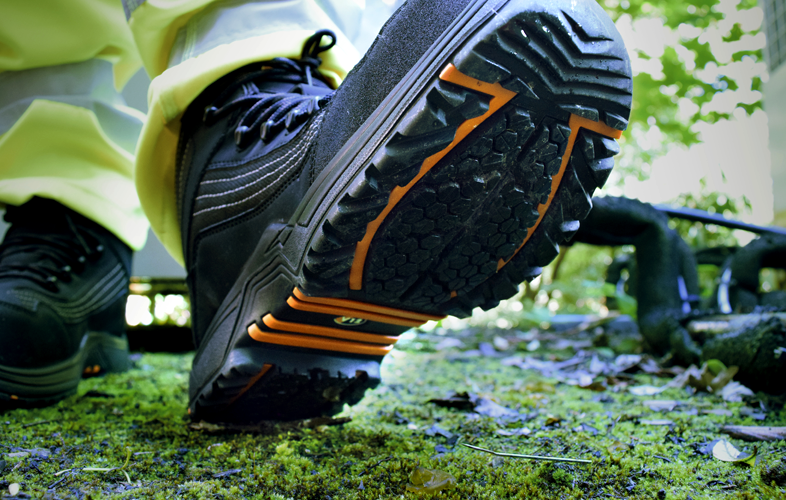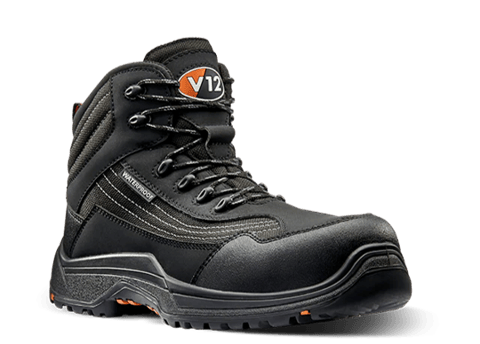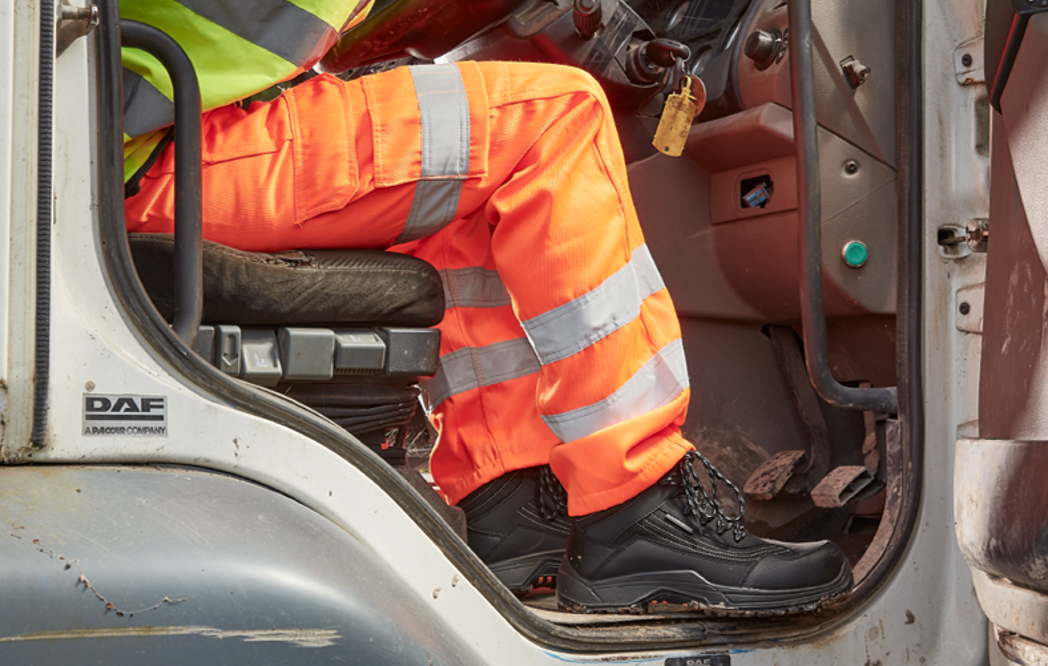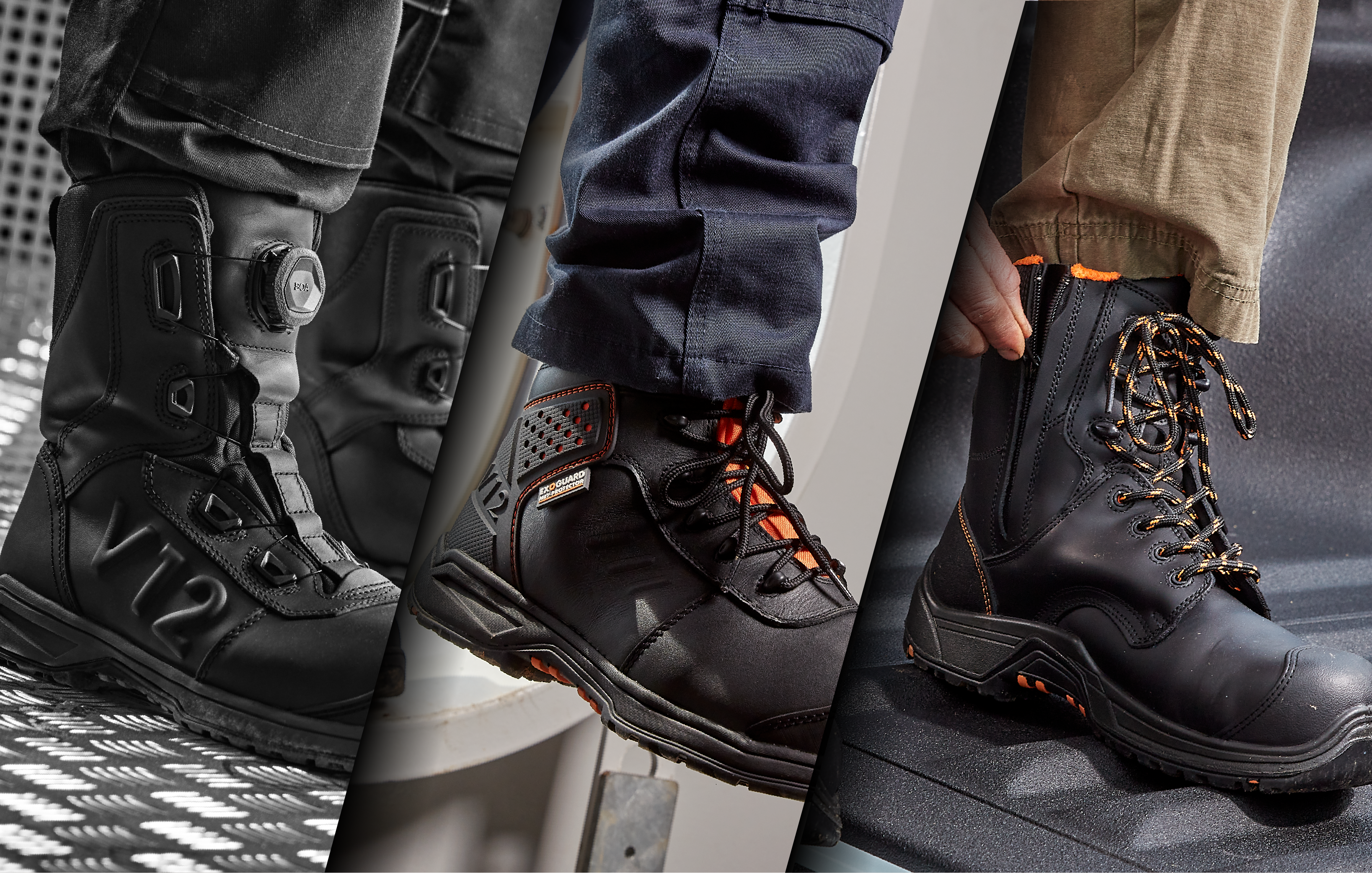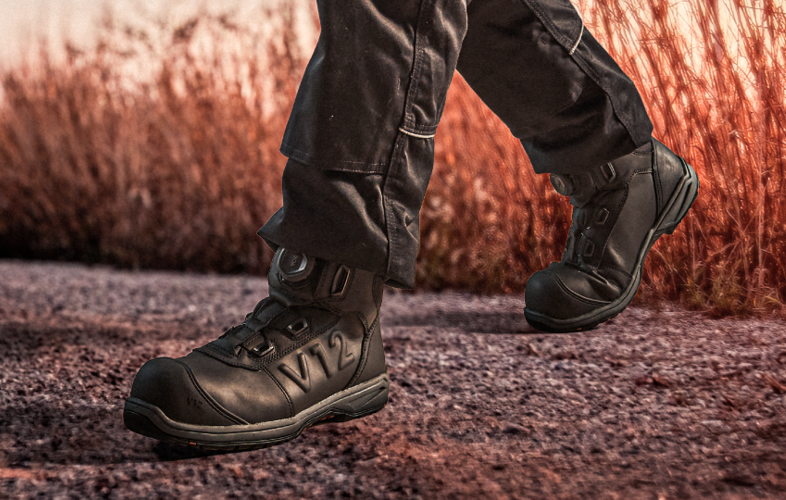The toecap is often the most well-known component in a safety boot. In fact, work boots have been - and still often are - referred to generically by many as ‘steel toe cap boots’ or ‘steelies,’ even when this hasn't necessarily been the toe cap material.
Yet given the number of steps the average work boot wearer takes per day, for those in charge of workplace Health and Safety, the anti-penetration midsole and the underfoot protection it provides should get just as much attention when considering wearer safety and comfort.
The big question is: what working environments are safety boots with midsole protection needed?
But before we get to that, let's get our definitions straight.
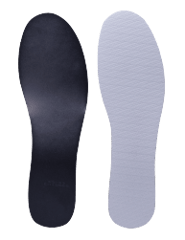 What is a midsole?
What is a midsole?
A midsole – sometimes described as an ‘anti-perforation insert’ - is a foot-shaped piece of steel or woven fabric running the length of a safety boot or shoe, designed to offer puncture-resistance from sharp objects such as nails, needles or glass that could otherwise penetrate the outsole and pierce or cut the foot.
Job roles where a midsole is requireD
A safety boot with a midsole will be required for any role where the terrain or environment features sharp objects that could penetrate the outsole. As a result, it is an essential feature for the majority of wearers working in safety-critical sectors including:
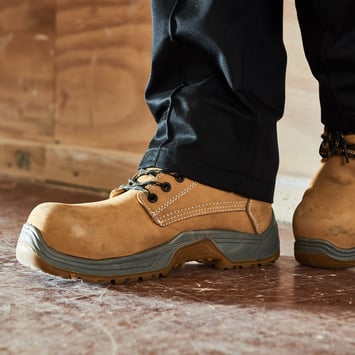
- Waste and Recycling
- Construction
- Warehousing
- Engineering
- Agriculture
- Utilities
Typically, it’s often industries like construction we associate with sharp objects because of the predominance of loose and errant nails, but nails are also a big hazard in roles such as Warehousing, as they can come loose from pallets and machinery. Also, there are considerably more sharp hazards than just nails in safety industries.
Teams working in Refuse Collection and Waste Management regularly come into contact with sharp splintered debris or glass items such as discarded lightbulbs that can penetrate footwear, and those working in Healthcare and Food Manufacturing can easily encounter fine needles and sharp utensils.
Want to see the difference a midsole can have on a wearer's safety? Watch below:
What are midsoles made from?
Steel
A midsole made from this material is cut from a roll of steel and then treated to smooth any sharpness or burrs. If you're selecting a boot with a steel midsole for your team's safety footwear solution, it’s recommended to pick stainless steel, as it will be corrosion-resistant.
Advantages
Steel midsoles provide a strong line of defence against sharp items, and despite their metal construction, still retain a degree of flexibility.
THINGS TO CONSIDER
Because of the way footwear is constructed, a steel midsole doesn't cover the entire sole area to the edges - rather it covers the most vulnerable part of the foot.
Fibreglass or ‘composite’ inserts
Now very popular, these non-metal midsoles tend to consist of layers of woven material bonded together with hot-melt adhesive.
Advantages
They provide greater flexibility than steel midsoles, they are lighter than steel which reduces foot fatigue and heavy legs, and they protect the entire foot area from edge to edge.
Finally, their non-metallic properties are helpful for people working in environments where a metal-detecting security scanner is used.
Pictured: V12's V1501.01 Caiman IGS is a best selling boot popular with Waste and Recycling teams due to its lightweight and strong anti-penetration insert, capable of protecting against sharp objects like glass and nails whilst keeping the weight off of feet
THINGS TO CONSIDER
Non-metal anti-penetration inserts tend to be more expensive than steel.
Which are stronger – metal or non-metal INSERTS?
In order to adhere to the EN ISO 20345 safety footwear standards, anti-penetration midsoles - regardless of whether they’re steel or non-metal, must be able to resist a nail in the penetration test up to a force of 1,100 Newtons.
How can I tell if my boots have a midsole?
For boots tested to the EN ISO 20345:2011 standard:
The following safety markings denote that footwear has an anti-penetration midsole:
- S1P
- SBP
- S3
- S5 (in the case of safety wellingtons)
For boots tested to the EN ISO 20345:2022 standard:
The following safety markings denote that footwear has an anti-penetration midsole:
- S3
- S5 (in the case of safety wellingtons)
- S7
The updated 2022 safety standards have led to changes in how a safety boot with a midsole is tested and marked - and in the case of non-metal anti-penetration inserts - the needle width of the test conducted.
If a boot's safety specification includes the ‘L’ or ‘PL’ code, this means the boot’s midsole is non-metallic (for example fibreglass or composite) and has undergone a penetration test with a 4.5 millimetre diameter nail.- If a boot's safety specification includes the ‘S’ or ‘PS’ code, this means the boot’s midsole is non-metallic and has undergone a penetration test featuring a nail 3 millimetres in diameter.
So, if you’re in charge of Health and Safety at your workplace, you’ll need to consider the types of sharp items that could pose underfoot perforation hazards for your team, because the width or fineness of these objects will determine whether you need ‘S’ or ‘L’ midsoles. For example, if your team work around finer sharp hazards such as hypodermic needles, then if you select a non-metal midsole boot, it’s advisable you pick one that includes an 'S' after its safety spec classification, as it will have passed a penetration test to deal with narrower sharps.
(If a boot's midsole is steel, it will be marked with a ‘P’ as per the original standards)
Find out more about how the updated EN ISO 20345 safety footwear standards have changed other safety boot tests and codes in our guide here.
MAKING THE RIGHT CHOICE FOR YOUR TEAM
So, when it comes to underfoot protection, to keep your teams safe and comfortable, always be led by the environment and the hazards of the role. This will enable you to make recommendations around the anti-penetration insert type to give workers a boot that will maximise their safety and comfort.
HAVE YOU SEEN V12’S BOOT FINDER?
The V12 Boot Finder is an online tool developed for you to help you find the right safety footwear. Click below, pop in the safety footwear requirements of your team such as midsole type, slip resistance and any other protection or comfort criteria, and you'll get our expert safety boot ‘best pick’ recommendations.

